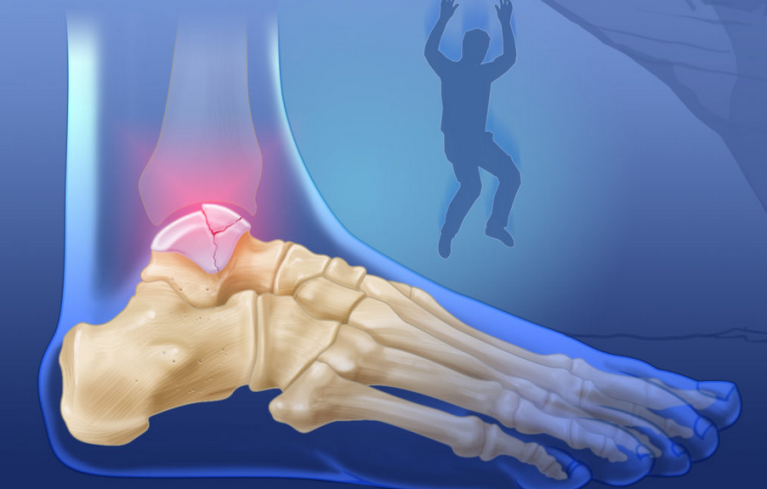If you have fallen or hit, it is important to be able to distinguish a fracture from the bruise. Read the article all the features of these conditions.
Contents
- A fracture - what is it: external signs, can it be without pain?
- Bruise - what it is: external signs
- Stretching - what it is: external signs
- Crack - what it is: external signs
- Fracture, bruise, crack or stretching - how to distinguish: General features
- How to distinguish a strong bruise from a fracture of the finger (little finger, other finger), legs?
- How to distinguish a fracture from a strong bruise of the hand (brush, wrists, elbow or elbow joint), legs (feet or feet, ankle, ankles, heels)?
- How to distinguish a fracture of the nose from a strong bruise: a hematoma on the face, what does it indicate?
- Riba bruise or fracture: how to distinguish?
- How to distinguish a fracture of the jaw from a strong bruise: a hematoma on the face, what does it indicate?
- How to distinguish the knee fracture from a strong bruise?
- Strong bruise or cutter fracture when falling: how to distinguish?
- How to distinguish a fracture of the shoulder, forearm from a strong bruise?
- How to distinguish a strong bruise from a thigh fracture?
- Which doctor to contact with a fracture, stretching, crack or bruise?
- Video: How to distinguish a bruise from a fracture?
Troubles with a person can happen at any time. He can fall, stumble, slip or awkwardly turn. Because of this, stretching, bruise or even a fracture may occur. The layman will not be able to immediately distinguish that he can do only a doctor on the basis of diagnosis. However, it often happens that you need to distinguish a fracture from the bruise. How to do it? What are the external signs of these states? Read this article.
A fracture - what is it: external signs, can it be without pain?

Considering these concepts in the broad sense, distinguishing a fracture from a bruise is very simple. The reason is the external signs. What is a fracture?
- A fracture, as a rule, is characterized by very severe pain, swelling.
- The mobility of the affected bone is broken.
- If you lightly press the damage, a specific crunch can be heard. It is called "crepitus", which happens when pressing the edema. However, the final diagnosis is made by the doctor, after the X -ray.
- Almost every ordinary person knows that fractures are closed and open.
There is still such a thing as fatigue fractures:
- They differ in that the “breakdown” of the bone does not happen completely, but partially.
- Such injuries cause chronic pain, for quite some time remain without attention.
- Often the focus of the occurrence of fatigue fractures - legs.
- This is due to a large load when playing sports and everyday walking. Most often “gets” to the bones of the feet and legs.
- Unlike other species, fatigue fractures often occur imperceptibly.
The reason may be an increase in the load on training, or a sharp sports activity. In the risk zone, beginners who still have a poorly developed muscle mass. After all, it is she who protects the bones. Signs:
- A fracture, as a rule, causes severe and frequent pain in a certain place.
- With a load, it can intensify.
- If a person is resting, such a condition can flow without pain.
- While a person does not train or simply moves, a violation of the integrity of the bone may not bother at all.
- But as soon as he again “loads” himself, the symptoms return again.
- Swelling occurs in the fracture zone. Although, other conditions are possible.
- In a certain place, the limb is deformed.
- A person cannot move a broken leg or hand.
- The limb becomes shorter.
- Bone fragments under the skin can crunch.
- When striking along the bone, severe pain is possible.
- If the patient broke, for example, the bones of the pelvis - he will not be able to tear his leg from the surface on which he lies.
The danger of such a state is that it can develop more strongly. As a result, if the bone is slightly broken, as in the case of a fatigue fracture, it will break completely after the loads. Such a defect will grow up longer and harder than in the case of a conventional fracture. That is why it is important to identify a violation in time.
Can a fracture be without pain? Answer:
- As you can see from an example with fatigue fractures, maybe. This type of defect does not bother a person until he again gives limbs the maximum load.
- However, other types of fractures are also manifested in different ways.
- Often people fall on a mountain slope, and after the rest of the day they go and ski, not suspecting that the leg is broken.
- A serious fracture is always characterized by pain, but the insignificant can not be noticed.
Why do not always hurt fractures? Answer:
- Researchers Southampton University We found out that the pain from the fracture may not feel those who have been happening for the first time.
- As for people who regularly broke something, each “breakdown” is characterized by unbearable pain in the whole body, general or local.
However, quite possibly, psychology and self -hypnosis occur here. Getting another fracture, a person recalls all the pain from the past. Due to this, the pain intensifies.
Bruise - what it is: external signs
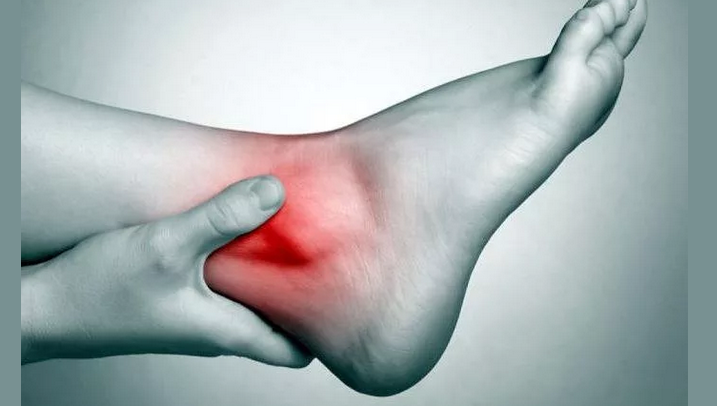
Bruce is one of the most common injuries. A person can get her in everyday life, playing sports and even just walking. This term is the injury of soft tissues (any kind) that did not cause serious skin damage. You can get a bruise as a result of a stab with a dull object or fall. Damaged:
- Leather
- Fat layer
- Blood vessels
A person feels pain in a damaged place. If the vessels are torn, hemorrhage is possible. At the site of the injury, swelling and hematoma are formed.
Bruises differ in severity. Often, the old people even look terrible. Since older people have fragile vessels. As for the bruise of the head, this is a banal bump on the forehead, which children so often get. With the last injury, dizziness, blood from the nose and nausea are possible.
Important: Despite the fact that a bruise is a household phenomenon, a mild severity, it is still recommended to see a doctor. After all, he will check if the internal organs or bones are damaged, whether there are additional hidden consequences.
For example, with a bruise of the face or body, air under the skin may form, which indicates damage to the sinuses, lungs. It is impossible to cure it yourself.
It is worth knowing: Some people think that the bruise appears only at the scene of the blow (and, therefore, the bruise). This is so, but other options are possible. With a trauma of the skull, bruises around the eyes occur. This is also possible with a nose of the nose.
Symptoms of bruises - external signs:
- The gap of the vessels, which lasts for several minutes (small) or watches (large).
- Strong edema, education and an increase in hematoma.
- Pressure on neighboring tissues and organs.
- Bills, nausea, blood from the nose, the head is spinning (with a bruise of the head).
There is a difference between a fracture and a bruise. A bruise is damage to the tissue. The limb is not deformed with it, however, bruises and swelling are formed on it, pain and internal ruptures of small vessels occur. While one of the main features of the fracture is deformation and the inability to move the limb.
Stretching - what it is: external signs
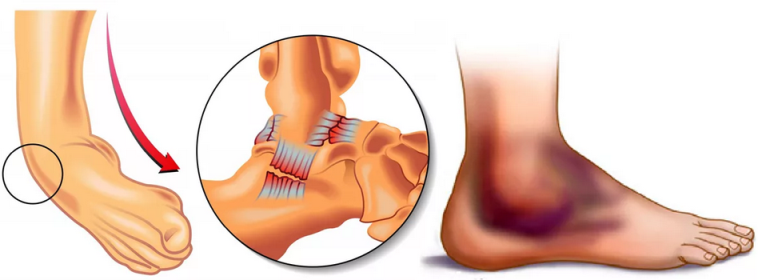
Stretching of skeletal ligaments is a consequence of injuries. The reasons are twisting and sharp turns of the joint that fixes them. You can stretch the ligaments as a result of classes in command sports, heavy athletics. Sometimes a reached ligament can even entail part of the bone to which it is attached. The injury is called "tear -off fracture."
External signs of ligament stretching:
- A severe pain occurs in the lesion of the lesion.
- The damaged joint hurts when pressed or attempts to move. The fact is that with a bundle injury there is a rupture of nerve fibers.
- It is possible to numb the problem area.
- Edema occurs in the damage zone.
- The skin can increase their temperature, redness is not excluded.
It is worth knowing:
Limiting activity:
- The correct comparison of the components is impaired, a person may experience spasms in the area of \u200b\u200binjury, it is difficult for him to stand on the limb or raise his hand.
- It's all about the protective mechanism.
- Similarly, the body warns a person against dangerous movements.
Hematomas:
- They occur due to the rupture of small blood vessels.
- It is possible to hemorrhage in the intermuscular zone or in subcutaneous fat.
- The main difference between the stretching and the gap is that hematomas often occur under the skin, can not only appear at the time of injury, but also “frozen”.
The ligament is damaged with a characteristic sound:
- This is a cotton.
- With a break, it is almost always heard.
- With stretching - in very rare cases.
Stretching is always painful and unpleasant. A person cannot move the limb for a long time, and it takes time to restore.
Crack - what it is: external signs
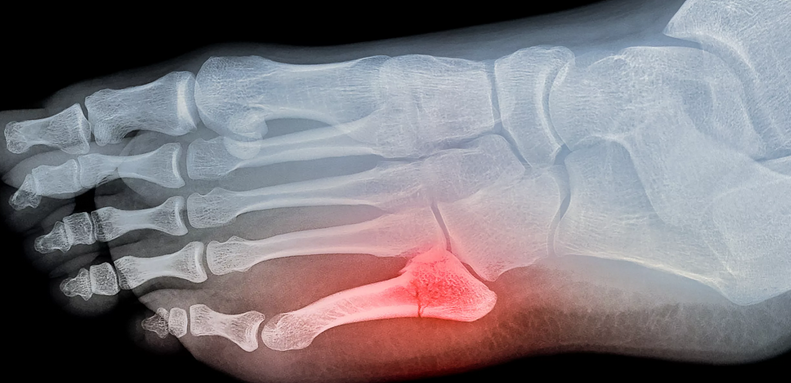
A crack in the bone can occur as a result of a blow or fall. Other external influences can also be considered a doctor. A crack is a violation of bone integrity. Cracks are:
- Single - They occur in one place.
- Multiple - appear in several places.
External signs of cracks:
- The damaged place hurts a lot.
- The pain intensifies with each movement.
- At rest, the pain is muffled.
- With a crack, for example, in the ribs - each breath causes painful sensations.
- Not the entire bone structure is damaged, but only its external part, where receptors are located, which symbolize about problems in the body.
- Edema in the damaged area, which increases very quickly.
- Hematoma.
The peculiarity of the crack is that bone tissue does not withstand the load, but the supporting function is always preserved. The difference is a fracture when bone fragments shift, and a person cannot rely on the limb and move it.
Fracture, bruise, crack or stretching - how to distinguish: General features

Of course, only a doctor can distinguish a fracture, bruise, crack or stretching after diagnostic measures. But there are common features that help to do this with ease even to an ordinary person:
- With a fracture possible: deformation of the limbs, the inability to move it, shortening, crunch of bone fragments, severe pain.
- Injury - This is a rupture of small vessels, which is accompanied by small edema and various kinds of hematomas. Pain occurs when pressure or pressing.
- Crack It differs from the fracture in that there are no fragments in this case. The supporting function is normal. However, severe pain during movement is also possible. But if the entire bone structure is damaged during the fracture, then with the crack only its specific part.
- With stretching Swelling and hematomas appear. This damage more applies to ligaments, not bones. There is also swelling, restriction of the movement of the problem area, redness and hematomas are possible.
As you can see, the difference is obvious, and if you look good at the place on the body that hurts, or to disagree, you can understand what happened.
How to distinguish a strong bruise from a fracture of the finger (little finger, other finger), legs?

The first distinguishing feature is pain:
- In the case of a strong bruise and a fracture, the degree is completely different.
- With a bruise, the pain is insignificant, but with a fracture, it can become completely unbearable.
- But often bruises are characterized by internal damage, dislocations or fractures.
A strong bruise can be distinguished from a fracture by swelling and swelling:
- Palpation arises painful sensations.
- Bruises often appear.
- The pain may decrease, but be intense at the time of injury.
- Possible limitations in movement.
If there is a fracture of the finger of the hand (little finger or other), legs:
- The pain will be much stronger, the limb is deformed, the patient will unable to own it.
- The fracture of the finger is often characterized by swelling and inability of movement, or very severe pain in the process of walking.
- The place of the fracture on the finger of the hand not only hurts and changes color, but also deforms. And if with a bruise a person can, overcoming the pain to move them, then with a fracture - no.
- With a fracture of the finger, a person will not (or can with great difficulty) step on the leg.
- Be sure to have edema and deformation, cyanosis of the skin.
Finger bruise:
- A person will not lose disorder, as in a fracture - it will be significantly broken.
- The bruise may be accompanied by a tendon rupture or a separation from the attachment site.
- There is swelling, the finger changes its color.
- The bruise of the little finger or other finger is characterized by acute and severe pain, which can give into a brush or shoulder.
- The skin is blue.
- The limb function is disturbed. Numbness is possible.
Important: If you have fallen and damaged your limb, urgently go to the hospital. Do not try to determine the cause of malaise yourself. Processing can lead to undesirable and serious consequences.
How to distinguish a fracture from a strong bruise of the hand (brush, wrists, elbow or elbow joint), legs (feet or feet, ankle, ankles, heels)?
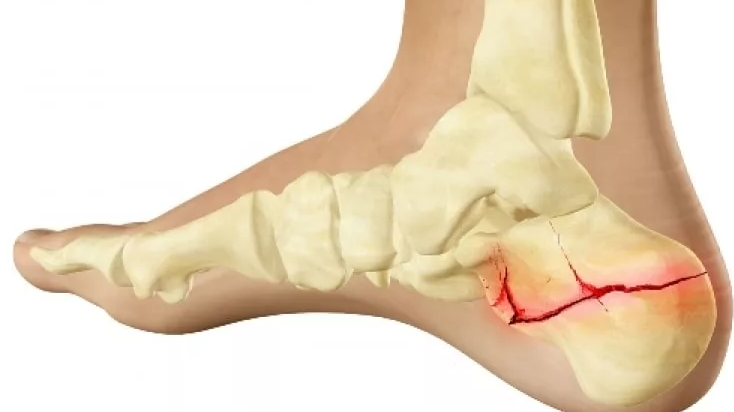
With a fracture, a characteristic crunch of limb will be heard. Its position will change significantly. It is possible to change mobility. But with a bruise (even strong), the volume of movements does not decrease. But in both cases there are severe pain and edema. With a fracture, they are much stronger than with a bruise. How to distinguish a fracture from a strong bruise Hands, legs:
- A crunch during a fracture is heard when pressed to a sore spot.
- With a bruise, a person will simply experience severe pain, but will not have a disturbed ability to support.
- The crunch is also distributed at the time of receiving the fracture.
- If an injury was received, but there is no sound, perhaps it is just a strong bruise.
- Unnatural mobility inside the joint may also speak of a fracture in these zones.
- Sometimes at the fracture site in the injury zone, strange red spots appear, the skin can gain marble color.
- The fracture place may be numb. But a similar situation is possible for stretching.
- With a fracture of the hand, crepitus is possible, in some cases numbness. It is always accompanied by displacements and deformations.
- With a strong bruise of the brush, swelling occurs, but deformation will not occur - there will only be severe pain.
Read more:
- With a fracture of the bone of the hand, wrists Intensive pain, tumors and crunch are possible. The limb is deformed. But with a bruise, this does not happen. No crepiting will be observed.
- In the case of a fracture of the elbow, the elbow joint - Flexion/extension of the hand will be difficult. Filmic hemorrhage is possible. With a bruise, there will only be pain, redness and swelling.
- Foot or foot with a fracture It hurts, acquires unnatural mobility, crunches when pressed. With a bruise there is no crunch. Also, with a bruise, there are no visible bone fragments. But swelling in both cases is present. A symptom of axial load is possible.
- If the ankle is damaged A crunch occurs. The leg is deformed, it is bending. As a rule, immediately after an unpleasant event, there is a sharp pain in the ankles. The joint cannot move, it does not work on the leg. Regarding the bruise of the ankle joint, there will be a tumor, lameness, hematoma, but bone tissue will not be affected.
The main difference between the bruises of the lower limb (ankles, heels, ankle, feet) from fractures is the presence of bone integrity. Only soft tissues are affected, there is no crunch and deformation of the limb.
How to distinguish a fracture of the nose from a strong bruise: a hematoma on the face, what does it indicate?

How to distinguish a fracture of the nose from a strong bruise? Ordinary people who do not have a medical education think that the matter is only in the power of the blow. In fact, there are many differences in external signs. With a fracture of the nose, it is characteristic:
- Strong state of shock.
- Loss of consciousness.
- Nausea, vomiting, orientation violation are possible.
- Bleeding is plentiful or smeared.
- Intensive pain when feeling.
- Mucus - discharge from nasal passages.
- The swelling around the nose and all the fabrics around it.
- Bruises. With a fracture, they are around the eyes and on the cheekbones. But with severe bruises, the fabric will be holistic.
- A change in the shape of the nose is the fact that blood under the mucosa can complicate breathing, which will contribute to the formation of hematomas in the nasal septum.
- Tear -separation.
- Fragments of bones in fabrics - with an open fracture.
With a strong bruise, the following are characterized:
- Bleeding
- Violation of breathing
- Pain at the slightest touch
- The curvature of the partition
- Swelling
- Discharges from the nose
- Bruises under the eyes and around the nose
Bruises differ - if in the case of a fracture, they are around the eyes and in the area of \u200b\u200bthe cheekbones, then with a bruise they are under the eyes and around the nose. A hematoma on the face can indicate both at a fracture and a strong bruise. Moreover, not only in the nose, but also other bones of the face or skull. Only the doctor can determine the localization of damage.
Riba bruise or fracture: how to distinguish?

With a bruise Ribers are possible sharp pain, redness. Painful sensations are aching, they do not retreat. If a person breathes sharply, sneezes, moves, inconvenience arises, breathing is difficult. Swelling appears, hematoma.
With a fracture The ribs are not aching, but more pronounced. The hearth is the chest. A person cannot make a full breath due to unpleasant sensations, his attempts to breathe a breath are interrupted.
The difference between a fracture:
- Crunch
- Clicks in the appearance of the defect
- The chest "lags behind" when breathing
As in the case of a bruise, there is a swelling of soft tissues.
How to distinguish a fracture of the jaw from a strong bruise: a hematoma on the face, what does it indicate?
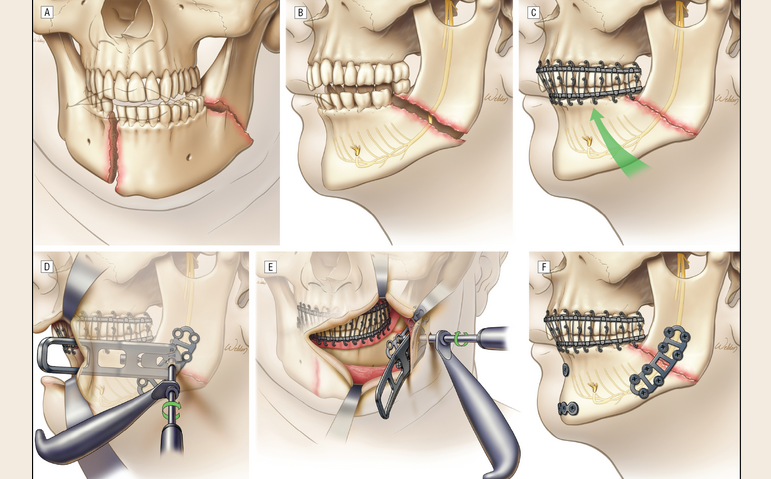
Fracture of the jaw characterized:
- Acute pain, displacement towards the dentition
- Displacement of fragments of the jaw, worsening mobility
- The bone is deformed, the bite may change
- Saliva flows between teeth in the fracture area
- The jaw plot may be numb
- Man is unable to close his mouth
- Bruises on the face are formed
- It hurts a person to eat, speak
What are the differences in a strong bruise? Answer:
- A person is able to close his mouth, but with a mechanical effect on the jaw, feels pain.
- Hematomas on the face and swelling are also possible.
- When impact, vessels are damaged. It hurts a person to chew, the jaw is published by a characteristic crunch.
- The body temperature rises, the head may hurt and the general malaise is felt.
With a bruise, no numbness occurs, there is no saliva. The jaws crunch when opening. The lymph nodes may become inflamed. The jaw in this case does not mix. Deformation in the bone does not occur, the bite does not change.
How to distinguish the knee fracture from a strong bruise?
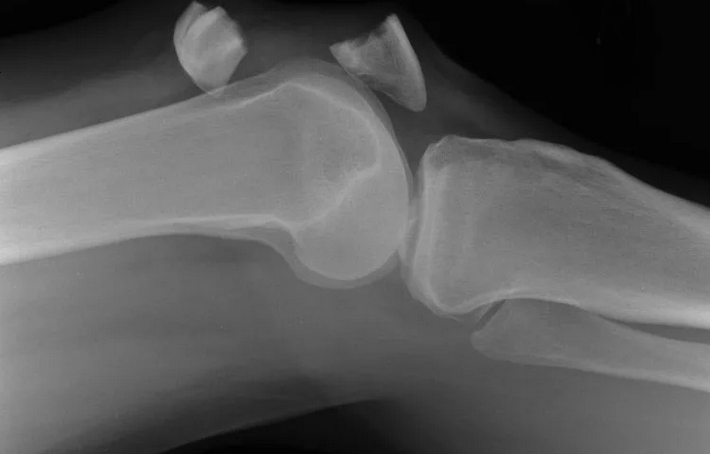
Fractures The patella is characterized by hemarthrosis. The knee can increase in size, it will become impossible for a person to move. The patient cannot raise a leg that is straightened. On palpation, it is possible to detect fragments of the patella. This is the main difference between a fracture and a bruise. If the fragments are not displaced, the patient can walk with a fracture of the knee. Perhaps the development of deforming arthrosis.
With a bruise Edema and restriction in movements are also possible. But there are no fragments when probing. The leg may be awarded, a hematoma is formed, the joint is deformed. In some cases, a sharp increase in temperature is possible. Flip can accumulate in the joint. The inflammatory process develops.
Strong bruise or cutter fracture when falling: how to distinguish?
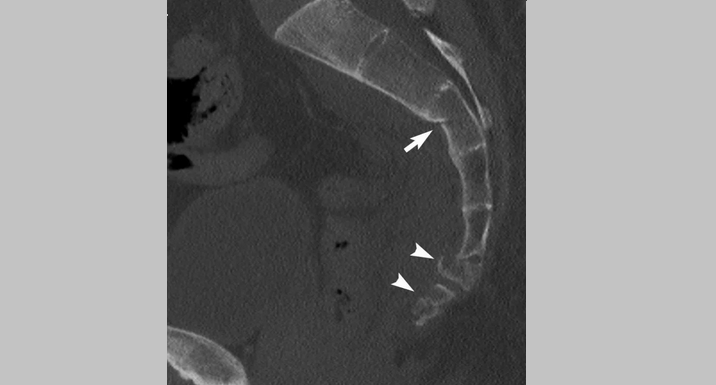
A strong cord bruise is characterized by:
- Local pain with sharp movements
- Tumor state
- Swelling
- A bruise is formed at the injury site
- Sitting and standing to the victim is hard
With a cord fracture:
- Very severe pain
- Hyperemia
- Swelling
- The movement of a person is difficult
- Pain intensifies when sitting and getting up
In movement, a person with a coccyx bruise is slightly more free than with a fracture. With improper fetting of the coccyx parts independently, a person can experience constipation and suffer from brush formations, fistulas, etc. It is possible inflammation of the nerve plexus of the coccyx (which will not happen when bruised), chronic headache.
How to distinguish a fracture of the shoulder, forearm from a strong bruise?

With a breakdown of the neck of the humerus, the patient experiences pain, his shoulder deforms. Here are more distinguishing features fracture:
- On examination, a crunch, shoulder or forearm is possible in size, mobility is difficult.
- Mandatory edema and bruising are necessarily present.
- If the victim broke the tubercle, then the pain will be above the shoulder joint, located locally.
- A person loses mobility, taking his hands to the side. The tendon can also be damaged by a fragment.
- With a fracture of the shoulder of the middle department, there is a displacement, deformation, severe pain. On the swollen tissues of hematoma.
With strong bruises shoulders and forearms, tumors and hematomas are not always possible, but only if the damage is severe. A person feels pain when moving and at rest. Aching pain is possible. The mild severity of the shoulder bruises and forearms is characterized by insignificant bruises and abrasions. With a second -degree bruises, unbearable pain in the painful zone and large hematomas is possible, temperature may increase, swelling occurs. However, there is no crunch and shortening the zone.
How to distinguish a strong bruise from a thigh fracture?
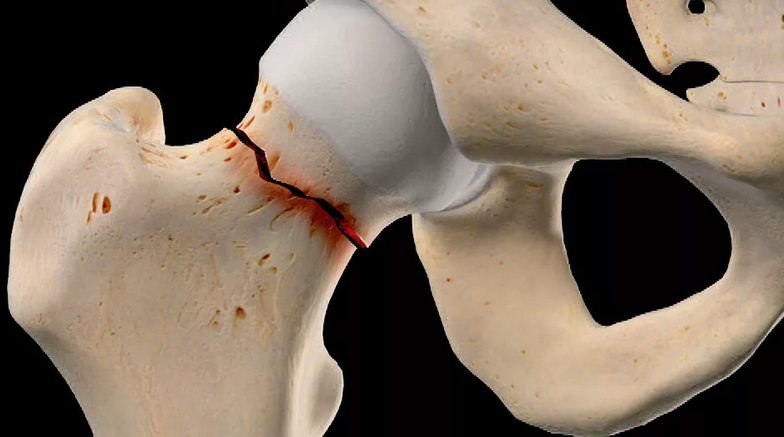
With a strong bruise of the thigh Almost immediately, hemorrhage and swelling occur, the thigh swells and unbearably hurts on palpation. The joint does not work well.
Fracture It differs in that in this state, a person has pain when moving the lower limb and in the groin. The leg cannot be rotated along the axis, the sore limb becomes shorter than healthy. The difference, as a rule, is a few centimeters - this is very noticeable. In addition, the syndrome of the “sticky heel” is possible - it is impossible to raise the leg.
Which doctor to contact with a fracture, stretching, crack or bruise?

Often people do not go to the hospital because they do not know which doctor to contact. If this happens, then you can contact an ambulance, and they will send or deliver to specialists. The consultation can also be obtained by the therapist or at the reception of the clinic. Which doctor to contact with a fracture, stretching, crack or bruise?
- Fractures of varying severity are treated by a traumatologist.
- They turn to the hospital much less often with bruises, but it is also in its competence.
- Consultations with sports doctors and orthopedists are possible.
In any case, with the appearance of unpleasant symptoms in the area of \u200b\u200bbones or joints, do not delay with a trip to the doctor. This is necessary so that the doctor correctly diagnosed and prescribe adequate treatment. Good luck!

